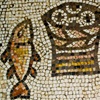I'm often asked what Saddleback Church does differently in our small group strategy. My answer is, "not one thing." Because, in fact, we probably do several things that many other churches also do. But what has been so interesting is to watch how God uses the combination of many different things to reach people and connect them into life-changing small groups.
This combination of eight key principles is what we characterize as the Saddleback difference.
Purpose-Driven Groups, not Special Interest Groups
Our small-group strategy intentionally deepens the five biblical purposes of fellowship, discipleship, ministry, evangelism, and worship into every group. We are far more concerned about healthy groups than the number of groups. Groupings of people that meet around "special interests" are strategic, but are not groups that are trying to balance the five purposes for healthy individuals and groups.
So, while our greeter's small groups (in the Greeter's Ministry) are very important and strategic, those groups don't generally focus on "health" of the person and group, but on greeting people to our campus. You need specialty groups that accomplish individual purposes, but you need small groups to bring "health" to your church.
Good Enough, not Perfection
Our small-group ministry strives to be effective, not excellent. We've made our biggest strides by pulling the trigger on ideas at the right moment, not by over-thinking every possible scenario that could go wrong. I love the passage of Scripture found in Ecclesiastes 11:4: "If you wait for perfect conditions, you will never get anything done" (NLT). We don't make excellence an idol, and we are not idle because we're waiting for perfection! God wants us to be good stewards of our resources, not good stoppers of every idea.
Relational, not Multiplying
Small groups need a simple mission. Too often small-group "theory" dictates that groups should be constantly multiplying. These strategies often place too much pressure on an average leader to be a "church strategist" instead of a relationship builder. We help small group leaders relax and use their natural desire to serve in ways that help their group grow closer.
When John and Mary walk in the front door of a small group, they're hoping that someone will be there who will greet them warmly, love them for who they are, pray for their challenges, encourage their growth in Christ, and praise their answered prayers. The last thing they want is those friends they are starting to trust—those people who they now feel ready to open up with—suddenly say, "OK, it was fun knowing you. Let's all pray about the new small groups we are going to start!" Life on life takes time. One piece of iron doesn't sharpen another piece of iron with one brush against it. Iron on iron has to happen many times in order for both to be sharpened.
Growth by Campaigns, not Disrupting Community
Small-group ministries live in a constant tension between fellowship and evangelism. Do the people in our small groups continue to grow closer together, or do we ask them to leave those groups so that we can grow the number of groups? What do we do about the people who have just recently joined a group? How long should a group stay together? These are all questions that get considered in every small-group ministry, often proving that there is no light without fire. It is, after all, a delicate balance.
We have grown to more than 2,500 adult small groups at Saddleback Church because we use a campaign to launch new groups every year. Since 2002, campaigns have increased small group participation at our church from 30 percent to 110 percent. We now have more people in small groups than attend our weekend services (on average). And rather than taking energy from our small groups by forced division or multiplication, the campaign approach actually adds energy to groups. There's an excitement to being involved in a church-wide effort.
Leadership potential, not proven leaders
Our H.O.S.T. strategy is designed to first get people into serving and then build them into leaders. If you wait for perfect people to lead your small groups, you'll be waiting until Christ's return. But you don't need "all-star, super-trained" small-group leaders to create a successful small-group ministry! All you need is people who are willing and obedient.
Remember, God doesn't call the equipped, he equips the called. So you can relax and heave a great sigh of relief. This small-group strategy will help you no matter your church size. Using biblically solid studies, even a member with a very young faith can host a small group in his or her home. We get people involved early in leading groups—and then help them get to where they need to be. It seems that's the model that Jesus showed us when he picked 12 ordinary men. His first requirement was "follow me."
But no ministry can grow much unless there is an infrastructure to support it. We look at the people who are serving as hosts and identify the ones who are natural shepherds. Then we begin to raise these people up through a "Small-Group Leadership Pathway" that helps them understand the ministry, recognize God's call in their lives, and then trains them in head and heart fundamentals so they can be effective in the ministry right from the beginning. We take hosts and turn them into leaders! When people have reasonable knowledge of what to do, they enjoy the ministry more because they see God working through them quickly. This is literally part of a street-to-staff pathway that greets people at the front door and guides them into greater service for the Kingdom within the small-group ministry.
Ratios, not Size
So often we get prescriptive about how big we want our small groups to get. Some churches assign people to groups so they can precisely limit size, others start the guilt train when a group hits a certain size, and there's probably at least one church in the world that preaches group size from the Old Testament. But let's face it, some people are just natural builders. You know the type. They start out with just a few people at their group and they just keep inviting others until pretty soon they have 20 or 30 people jammed into their house every Wednesday night, all trying to figure out who gets to sit down this week.
At Saddleback, we don't penalize the people with the gift of being able to gather people; instead, we encourage groups to become any size they wish to. Then we equip them for health in spite of their size. Through sub-grouping we help maintain ratios of attendees to leaders to optimum levels, so that participation and group health are not jeopardized. In other words, we say you can grow your group as big as you like and we'll show you how to foster an environment for life-changing community. In fact, sub-groups are one part of a strategy we call "large group/small group."
Simple Systems, not Complex Structures
You don't need to spend a lot of money on staff as you grow. Saddleback uses a leadership development process that can quickly build a network of 10-hour-per-week community leaders to develop, guide, and encourage group hosts to become leaders. We now provide better care for our groups through a flattened structure. The beauty of this approach is it mobilizes those who have leadership potential within your small groups to serve in the ministry. Then it equips them with consistent, uniform training for service (our Saddleback Leadership Development Pathway).
The result of this process is that it helps bring health to your small-group network without adding to the stress of your staffing budget. Sure, organizational development books might say you need to have capillary networks, hierarchical trees, and org chart jungles with their accompanying costs in order to build a big organization. But in the end, you only want to help people get into groups that are healthy so they can experience life transformation. That doesn't take complexity; it takes simplicity.
Strategic Care, not Equal Care
Some small-group people believe that every group deserves equal care. But the reality is that not all groups are created equal. In any small-group community there are early, mid, and late adopters. Some groups have very mature leadership. Some groups are brand new. Some are full of baby Christians. Others have been liberally sprinkled with challenging types of people. Of course we love them all, but we shouldn't put the same effort and attention into them all, because some simply will need more and some will need less. At Saddleback, we find that "equal care" can actually hurt leadership development and health rather than help. So, we prioritize our groups based on four categories. This simplifies care management and allows our leadership infrastructure to be more effective at providing care.
The "Saddleback Small Group Difference" I shared in this article describes how small groups operate differently at our church. As I said, there really isn't one thing we do differently. It's all of them in combination. We don't pretend we have the perfect answers. These are just the ones that are workingat Saddleback.
God has grown small-group participation in our church in a dramatic and exponential fashion. It is my prayer that your small-group ministry experiences the same Kingdom impact, all for the glory of God.
Steve Gladen has been a staff member since 1998 at Saddleback Church, where he oversees more than 2,500 adult small groups.
—Steve Gladen; copyright © 2006 by the author and Saddleback Church. Used with permission.









